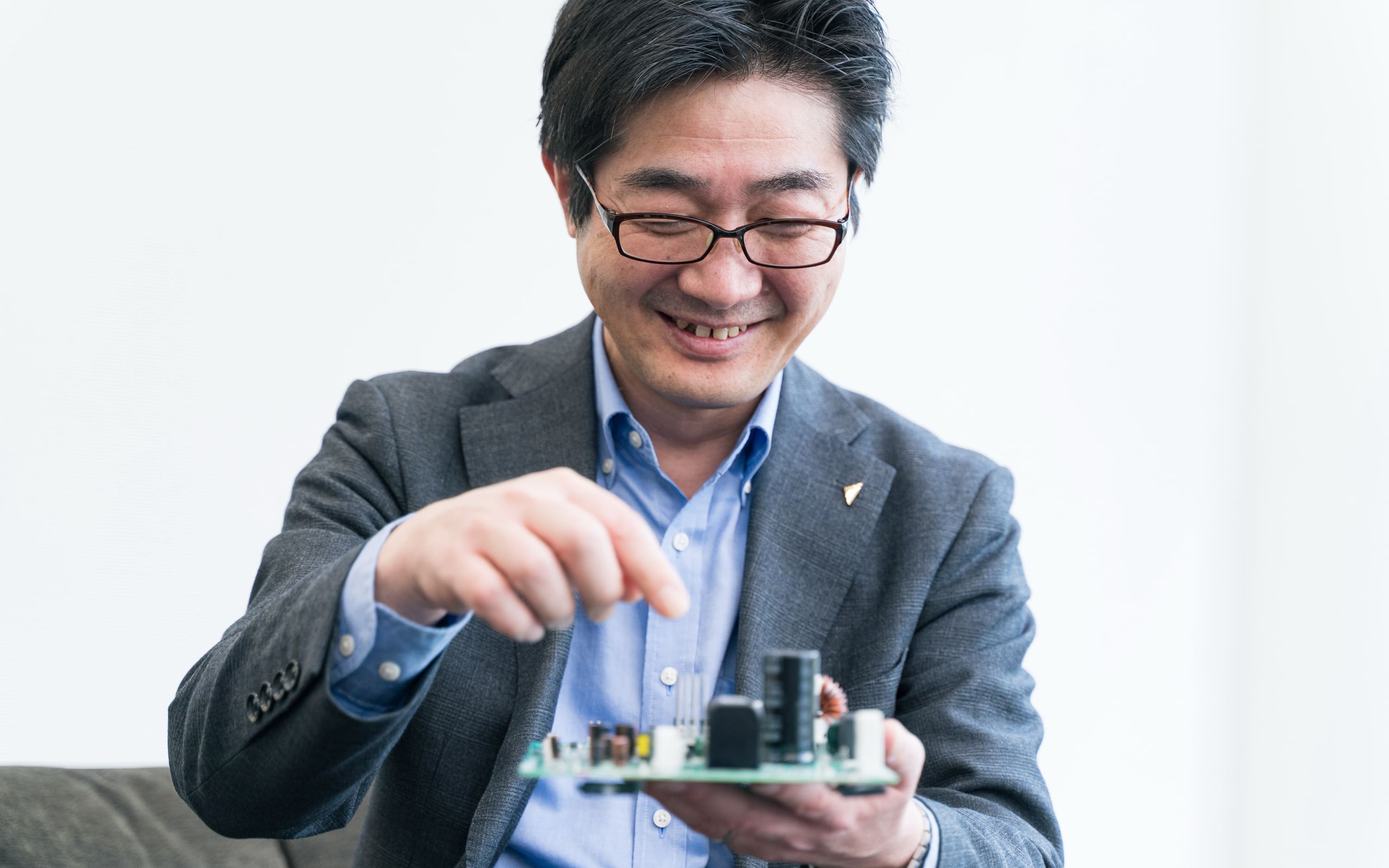After joining the company, he was assigned to the Shiga Plant, the place where he had served his internship, and worked on tests of inverters for room air conditioners. After proficiently learning control methods, he is now in charge of electrolytic capacitor-less inverters and is developing inverters to be installed in volume zone models for overseas markets.
Electrolytic capacitor-less inverters, which facilitate miniaturization and component reduction, are directly related to Nakajima's wish to "make the world a better place through power electronics.” Besides energy savings, he explains, "Smaller components will lead to lower transportation costs and fuel consumption for transportation. In this way, we can contribute to the global environment by advancing technological development."
NEWS
Global Promotion of Inverter Air Conditioners Based on Local Experience
FEATURE
2022.10.25
Inverter air conditioners consume less power and have a nearly 100% penetration rate in Japan, but their global penetration rate remains extremely low. There are many reasons for this, including cost. Yuki Nakajima and Nobuo Hayashi are the ones at Daikin Industries who are working to lower the cost of inverters. Nakajima sees the need for development based on the unique local conditions that he witnessed when stationed in India. Hayashi is also working on cost reduction to promote the widespread use of inverters in India.
Desire to contribute to the world through power electronics
Nakajima, who belongs to the inverter development team, has been involved in power electronics research since his university days. He had been looking for a job with the hope of "doing something good for the world with power electronics," but after spending about five months at the Daikin Shiga Plant as an intern where he enjoyed the work environment, Nakajima made Daikin his first choice and joined the company in 2013.
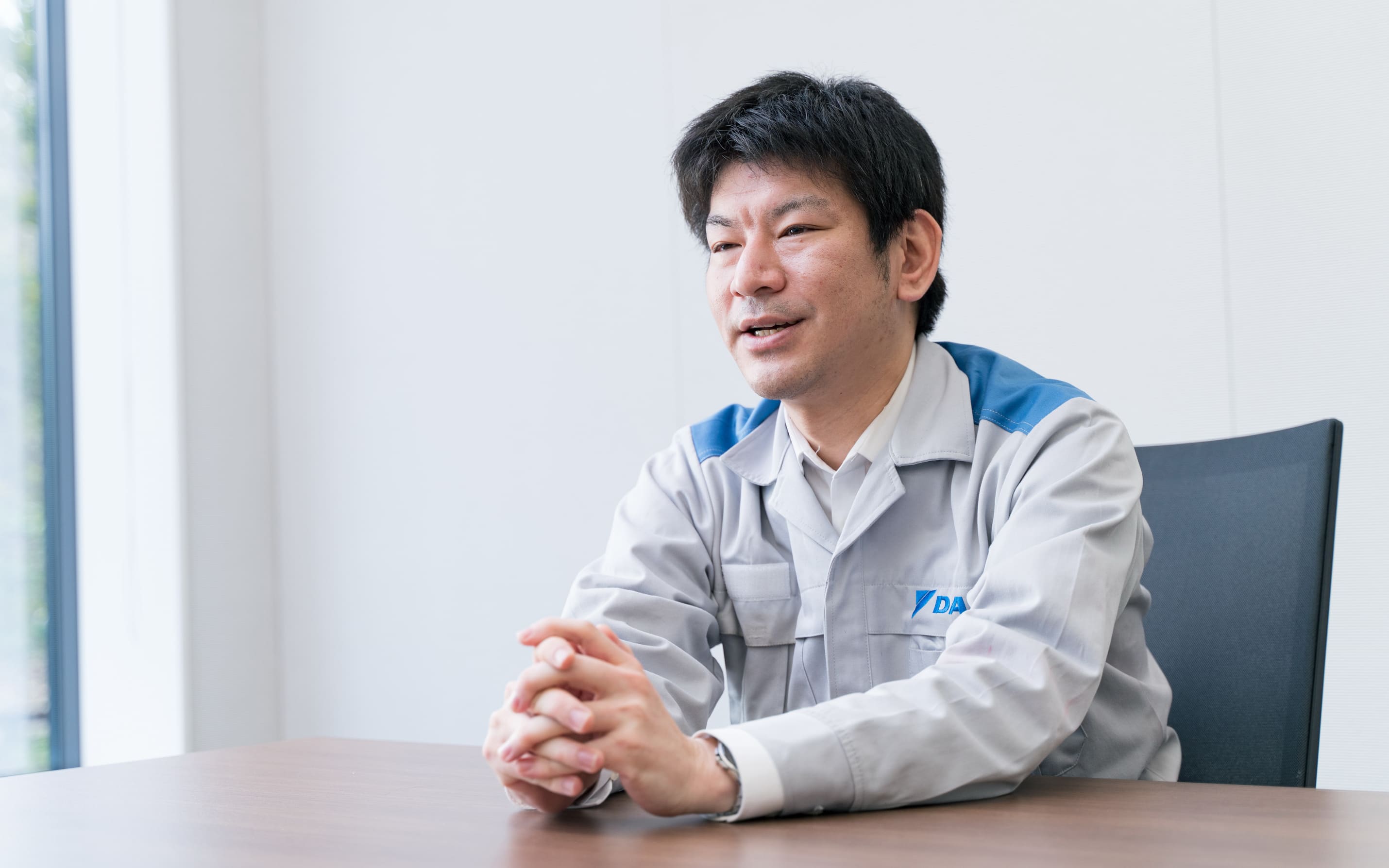
Electrolytic capacitor-less inverters promote air conditioning and energy savings
Similarly, Nobuo Hayashi has also been researching power electronics since his university days. Although his power electronics research focused mainly on electric power companies, he wanted to work for a manufacturer. Being from Osaka, he became interested in Daikin Industries and joined the company in 2011.
After joining Daikin, he was put in charge of testing large motors and learned how to control motors before moving to the development team for electrolytic capacitor-less inverters. There he was placed in charge of motor control software, which he performed while working on methods for fine control in accordance with motor movement and overcoming the harmonics issues that accompany inverters. He also conducted research on miniaturization and cost reduction.
After joining Daikin, he was put in charge of testing large motors and learned how to control motors before moving to the development team for electrolytic capacitor-less inverters. There he was placed in charge of motor control software, which he performed while working on methods for fine control in accordance with motor movement and overcoming the harmonics issues that accompany inverters. He also conducted research on miniaturization and cost reduction.
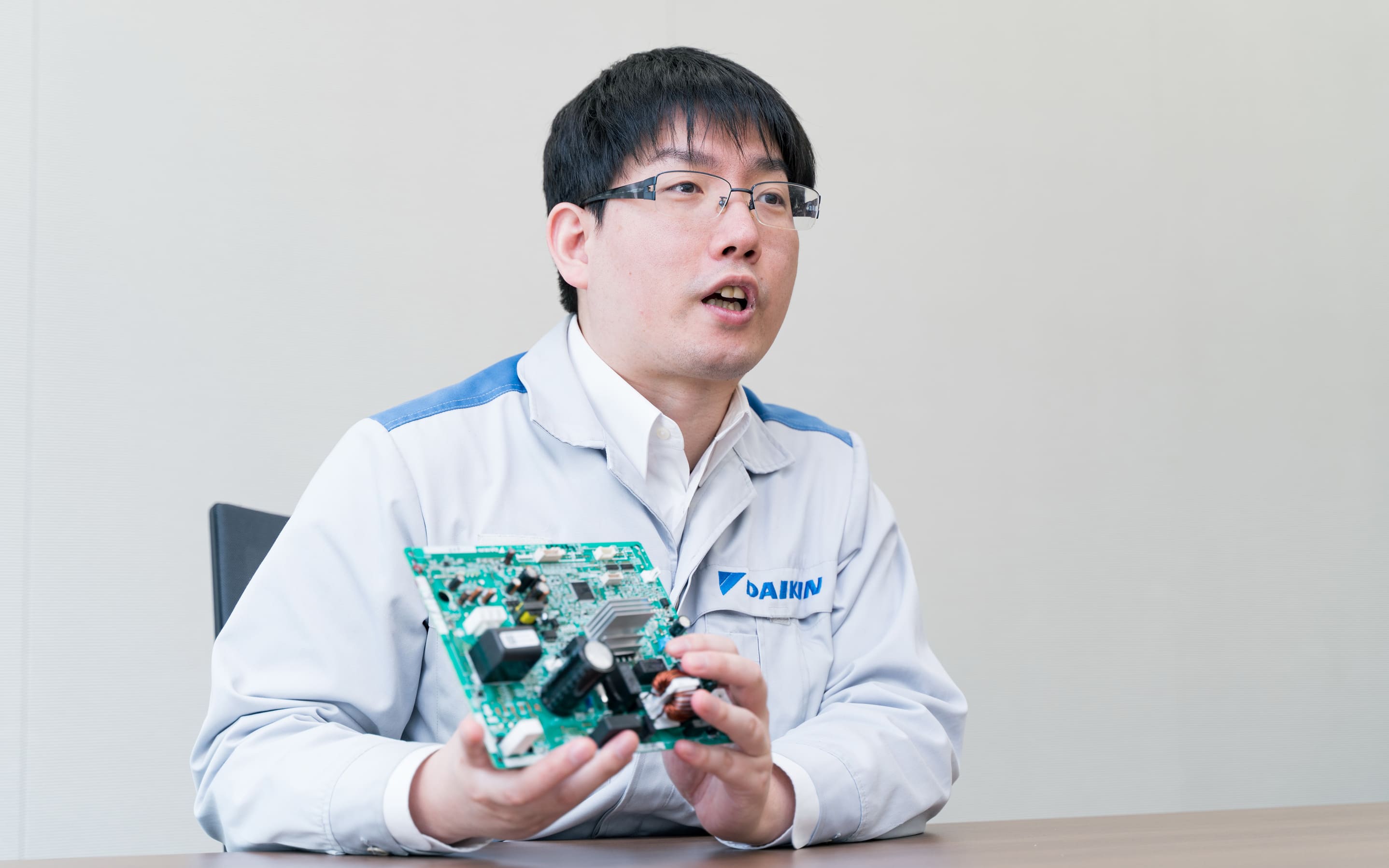
After his transfer to TIC, he continues to oversee development of electrolytic capacitor-less inverters and is mainly engaged in R&D for future technology development aiming for a level higher in product miniaturization that extends far beyond the next product launch.
In explaining the advantages of an electrolytic capacitor-less inverter, Hayashi says, "By eliminating the electrolytic capacitor, which is a relatively expensive component, we can lower the price. In developing countries, inverter air conditioners are rarely purchased because of their high cost, so our goal is to offer them at an affordable price by using electrolytic capacitor-less technology. In turn, this will promote the use of inverter air conditioners," he said.
In explaining the advantages of an electrolytic capacitor-less inverter, Hayashi says, "By eliminating the electrolytic capacitor, which is a relatively expensive component, we can lower the price. In developing countries, inverter air conditioners are rarely purchased because of their high cost, so our goal is to offer them at an affordable price by using electrolytic capacitor-less technology. In turn, this will promote the use of inverter air conditioners," he said.
Air conditioner utilization that differs from Japan
A major reason for Daikin’s aggressive promotion of inverter air conditioners is to contribute to the global environment by saving energy. However, while the penetration rate of inverter air conditioners in Japan is close to 100%, the use of inverter air conditioners in North America, South America, Southeast Asia, and other parts of the world has yet to become widespread. This is because inverter air conditioners are more expensive than non-inverter air conditioners, and there is little interest for energy savings in regions where electrical energy is relatively inexpensive.
“Inverter air conditioners can be controlled at variable speeds. This enables them to be operated at slower speeds after the initial heating or cooling operation is performed and maintain comfort while using less electricity. But when electricity rates are low, there is little advantage to using inverter air conditioners, and there was a market in which non-inverter air conditioners were the norm," asserts Hayashi.
In the future, as energy regulations change and power consumption at intermediate and low loads is pursued, inverter air conditioners will easily increase along with the mindset for energy savings. As Hayashi suggests, "It is more important now to confront this as a kind of opportunity." When he learned of the low penetration rate of inverter air conditioners in Asia and other regions, he felt that "there are many regions where the penetration rate of inverter air conditioners is low, but the world will become increasingly environmentally conscious in the future, and I want to contribute to the global environment by promoting the use of inverter air conditioners.”
“Inverter air conditioners can be controlled at variable speeds. This enables them to be operated at slower speeds after the initial heating or cooling operation is performed and maintain comfort while using less electricity. But when electricity rates are low, there is little advantage to using inverter air conditioners, and there was a market in which non-inverter air conditioners were the norm," asserts Hayashi.
In the future, as energy regulations change and power consumption at intermediate and low loads is pursued, inverter air conditioners will easily increase along with the mindset for energy savings. As Hayashi suggests, "It is more important now to confront this as a kind of opportunity." When he learned of the low penetration rate of inverter air conditioners in Asia and other regions, he felt that "there are many regions where the penetration rate of inverter air conditioners is low, but the world will become increasingly environmentally conscious in the future, and I want to contribute to the global environment by promoting the use of inverter air conditioners.”
Motivated as a developer by the experience of being appreciated overseas
Nakajima was stationed in India for a year in 2018. In reflecting on his experience in India, he says, “I’ve been involved in inverter development for the overseas market since I started working at Daikin, and I witnessed many of stories in India that I had only heard about.” However, once he observed air conditioners in the homes of local employees, he realized that "we need to design air conditioners that fit local homes."
For example, to promote Daikin inverter air conditioners in India, it is just as essential to respond to the local environment as it is to his original goal of providing energy-saving performance. “The air pollution is terrible, and in urban areas where there is a high concentration of automobile factories, the masks that people wear quickly become dirty. Even air conditioner filters quickly turn black. There are times of the year when the dust is particularly harsh," he added.
There is also a response to the power supply. It is often said that power supply voltage in India is unstable, and frequencies can also be greatly disturbed, which can affect operation unless proper countermeasures are taken. Nakajima has implemented a variety of countermeasures, and after his visit to India, he received a direct message of appreciation from a local subsidiary regarding the measures he had taken: "Your efforts were very helpful, and we have fewer problems in the market.” Nakajima admitted that he took great delight in being appreciated.
From this experience stationed in the region, he believes that "there is a good chance that inverter air conditioners will sell well if they are properly adapted to the needs of the market. We need to promote the use of inverter air conditioners in conjunction with reducing electricity costs and CO2 emissions." He also recalls that it was useful to actually experience the local situation and the problems that arose in the market.
For example, to promote Daikin inverter air conditioners in India, it is just as essential to respond to the local environment as it is to his original goal of providing energy-saving performance. “The air pollution is terrible, and in urban areas where there is a high concentration of automobile factories, the masks that people wear quickly become dirty. Even air conditioner filters quickly turn black. There are times of the year when the dust is particularly harsh," he added.
There is also a response to the power supply. It is often said that power supply voltage in India is unstable, and frequencies can also be greatly disturbed, which can affect operation unless proper countermeasures are taken. Nakajima has implemented a variety of countermeasures, and after his visit to India, he received a direct message of appreciation from a local subsidiary regarding the measures he had taken: "Your efforts were very helpful, and we have fewer problems in the market.” Nakajima admitted that he took great delight in being appreciated.
From this experience stationed in the region, he believes that "there is a good chance that inverter air conditioners will sell well if they are properly adapted to the needs of the market. We need to promote the use of inverter air conditioners in conjunction with reducing electricity costs and CO2 emissions." He also recalls that it was useful to actually experience the local situation and the problems that arose in the market.
Brushing up with technology exchange presentations
The Daikin Technology and Innovation Center (TIC) is where Nakajima and Hayashi are currently assigned and the home to a large number of researchers from various fields. Nakajima describes them, "There are people with cutting-edge research achievements in key points for TIC, but I can go to them whenever I have a problem. They treat us in a kindhearted manner and give us the opportunity to learn a great deal from them over a broad spectrum of areas, so I feel that I can grow as a researcher.
In TIC, different development teams gather on the same floor, and it creates an environment where it is easy to consult with other teams, and there is always a space where people can stand around and talk or gather at any time to discuss things. However, without knowing who is developing what, it is impossible to consult or discuss. Therefore, TIC holds a technology exchange event once a year which brings developers together to present the products and technologies that they are researching. Nakajima has also given presentations on inverters, which led to consultations with people whom he had not previously approached. This has led to new connections.
Daikin has many opportunities to share information, and the materials compiled at these events become a good learning experience. In addition to technology exchange events, there are many interactions outside of TIC.
Hayashi also states that since moving to TIC, where there are many opportunities for technology exchanges, "I am now able to see things from a different perspective by working on development based on my knowledge of other technologies.” While development sites tend to be more vertically connected, horizontal connections are stronger at TIC where the aim is to promote technological development in an open atmosphere with no boundaries.
In TIC, different development teams gather on the same floor, and it creates an environment where it is easy to consult with other teams, and there is always a space where people can stand around and talk or gather at any time to discuss things. However, without knowing who is developing what, it is impossible to consult or discuss. Therefore, TIC holds a technology exchange event once a year which brings developers together to present the products and technologies that they are researching. Nakajima has also given presentations on inverters, which led to consultations with people whom he had not previously approached. This has led to new connections.
Daikin has many opportunities to share information, and the materials compiled at these events become a good learning experience. In addition to technology exchange events, there are many interactions outside of TIC.
Hayashi also states that since moving to TIC, where there are many opportunities for technology exchanges, "I am now able to see things from a different perspective by working on development based on my knowledge of other technologies.” While development sites tend to be more vertically connected, horizontal connections are stronger at TIC where the aim is to promote technological development in an open atmosphere with no boundaries.
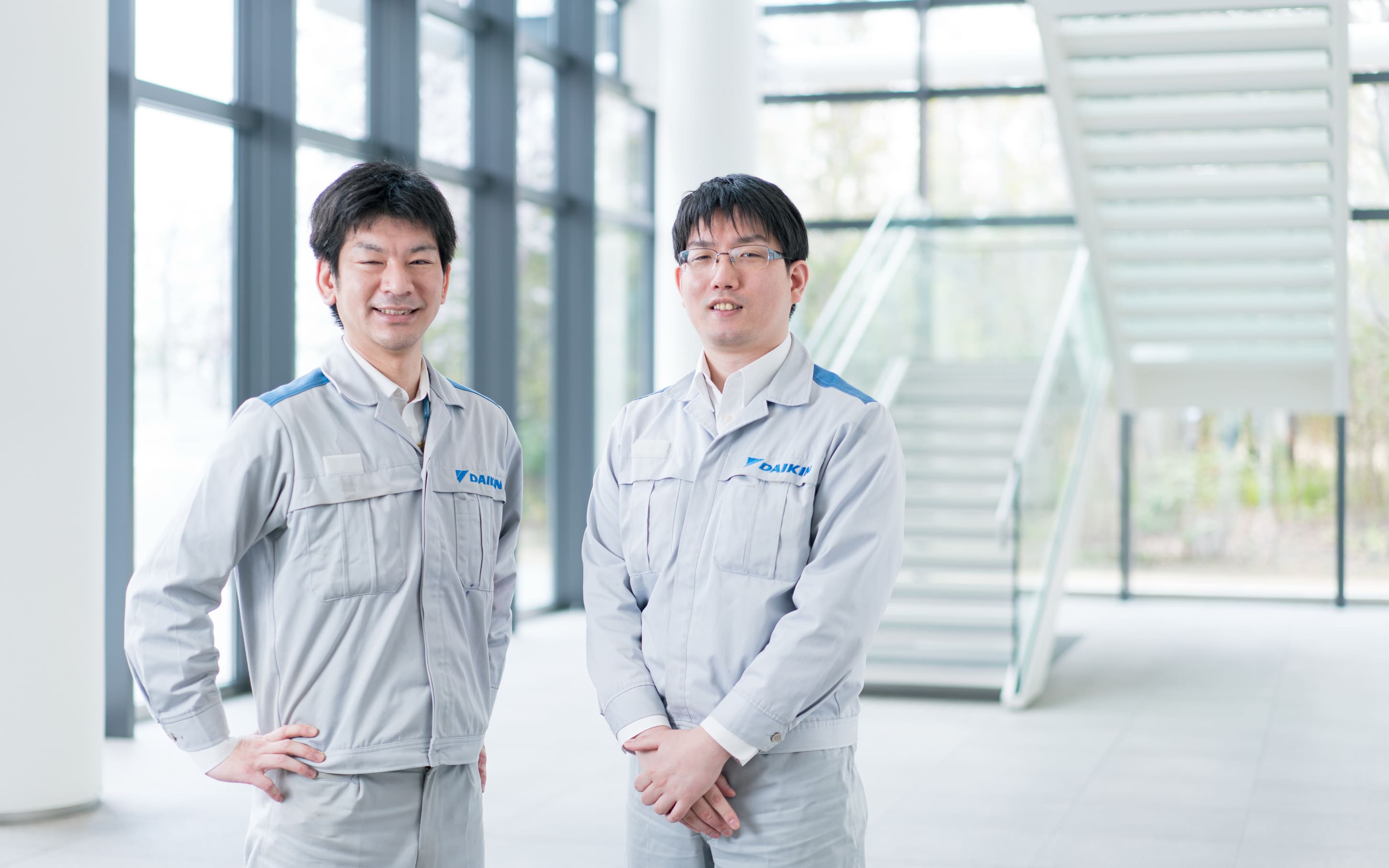
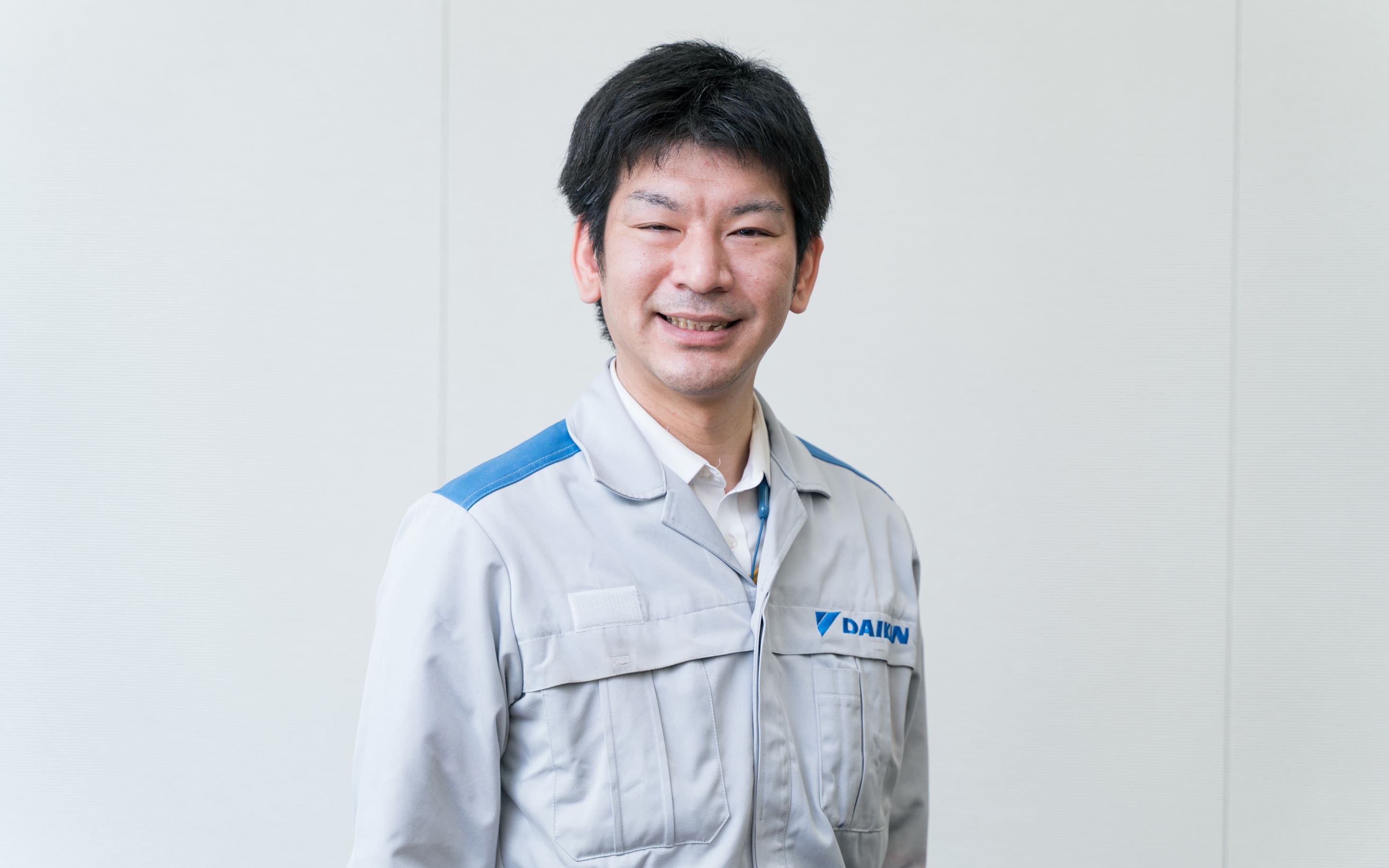
Yuki Nakajima
Technology and Innovation Center
Joined the company in April 2013. Born in Shimane Prefecture. Responsible for power conversion circuit technology. By introducing new technologies to the market one after another, we are challenging ourselves to make the world a better place, little by little.
Technology and Innovation Center
Joined the company in April 2013. Born in Shimane Prefecture. Responsible for power conversion circuit technology. By introducing new technologies to the market one after another, we are challenging ourselves to make the world a better place, little by little.
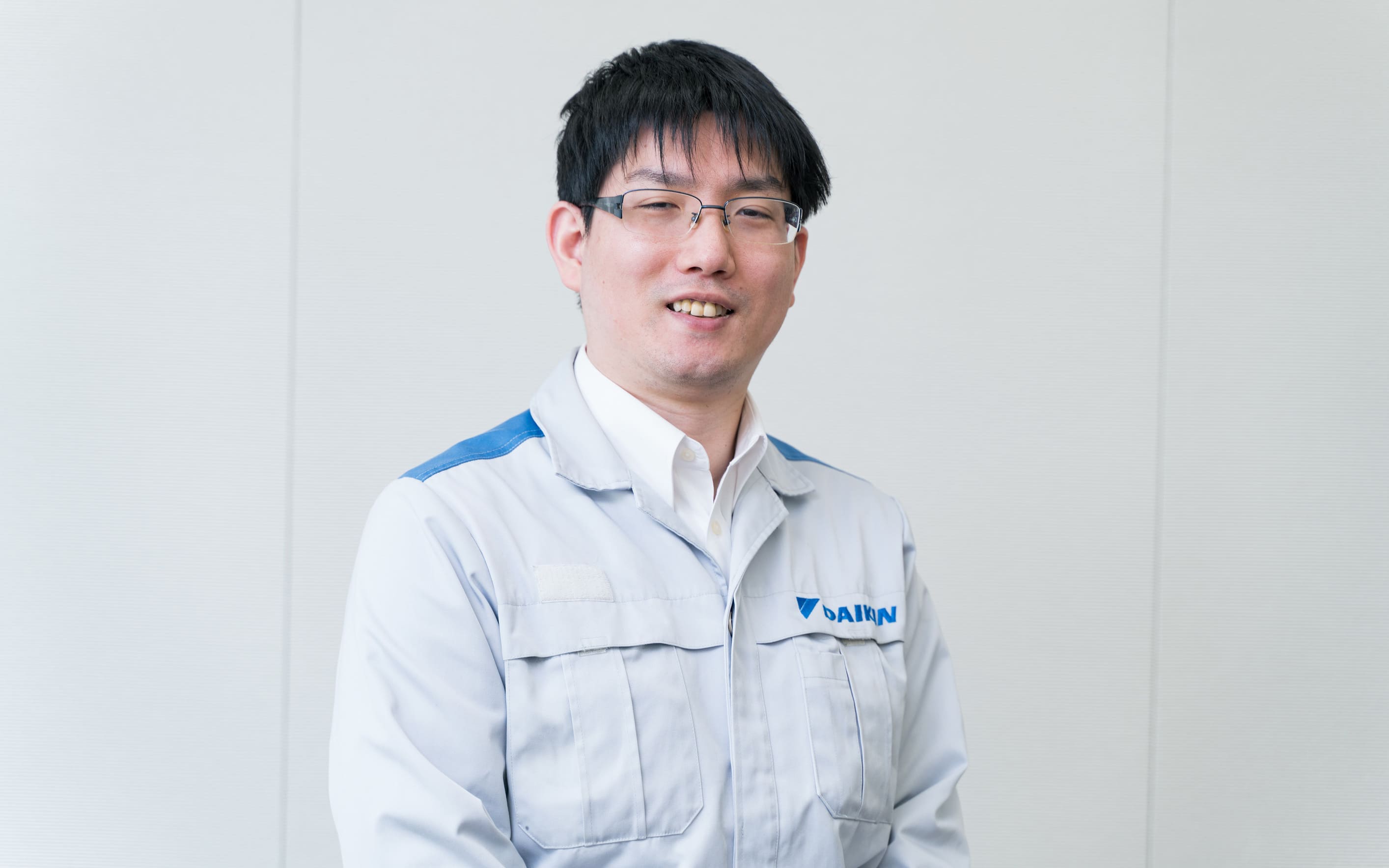
Nobuo Hayashi
Technology and Innovation Center
Joined the company in April 2011. Born in Osaka. In charge of inverter control technology. We would like to contribute to the reduction of environmental load by downsizing power converters through advanced control and promoting the worldwide use of low-cost inverter air conditioners , that no other company offers.
Technology and Innovation Center
Joined the company in April 2011. Born in Osaka. In charge of inverter control technology. We would like to contribute to the reduction of environmental load by downsizing power converters through advanced control and promoting the worldwide use of low-cost inverter air conditioners , that no other company offers.
Related article






